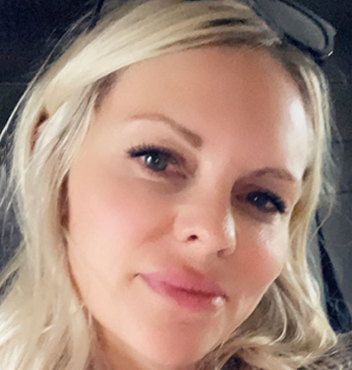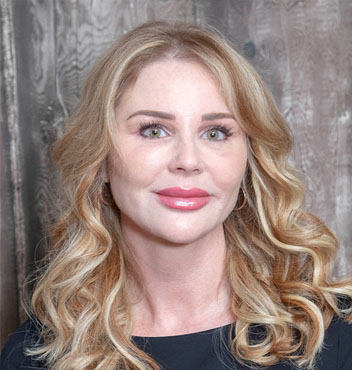blog
6 Steps for Conducting an Aesthetic Patient Consultation

Nov 07 2023
Reading Time: 5 Minutes
Author: Patricia Pezzano
A patient consultation is an essential and crucial part of any medical procedure, whether it’s an injectable treatment, laser treatment, or a more complex surgery. Not only is it a legal requirement, but it’s also an opportunity to build client rapport, assess the patient’s needs and expectations, educate them about the procedure, and plan their treatment accordingly.
An effective consultation will also help prevent complications, enhance patient satisfaction, and increase patient loyalty and referrals. Here is our step-by-step guide to perfecting the aesthetic consultation so that you can achieve the best outcomes for your patients and your practice.
Step 1: Prepare for the Consultation
Before the aesthetic patient consultation begins, pre-planning is essential to ensure a seamless and productive experience for both yourself and the patient. This involves gathering necessary information and creating an environment conducive to open communication.
Acquiring new patient details is the first step. This includes the patient’s medical history, previous aesthetic procedures, medical conditions, allergies, current medications, and any other relevant information you may need. Having this information in advance allows the practitioner to tailor their approach and ensures a comprehensive understanding of the patient’s overall health.
Setting up the physical space for the consultation is equally vital. A comfortable and private environment fosters trust and encourages the patient to openly discuss their concerns. The absence of distractions and the provision of necessary paperwork in advance streamline the process, allowing the focus to remain on the patient and their aesthetic goals.

Step 2: Establish Rapport and Trust
First impressions make a lasting impact and can shape a potential client’s perception of you and your services. Try to establish rapport and trust from the start—this will go a long way toward ensuring a positive experience. An effective way to do this is to offer a warm greeting and introduce yourself, along with stating your credentials to prove your expertise.
It is also important to practice patient-centred communication. Here are a few different ways you can implement this into your process:
- Use active listening skills and show empathy for the patient’s concerns and feelings
- Ask open-ended questions and have them do most of the talking
- Avoid leading or judgmental inquiries that may make the patient feel pressured or defensive
- Convey interest and confidence through positive body language and eye contact
- Speak in simple and clear language, avoiding medical jargon or technical terms that may confuse or intimidate the patient
- Address the patient by their name, and use their preferred pronouns
Step 3: Assess the Patient’s Needs and Expectations
Every patient has their reasons or motivations for seeking aesthetic treatments.
As a medical aesthetics practitioner, it is your job to uncover their needs and expectations so that you can achieve their desired treatment outcomes as best as possible. This is one of the most important aspects of a successful patient consultation.
Consider (sensitively) asking about their level of satisfaction or dissatisfaction with their current appearance. Follow up by asking about specific concerns, and what type of result they are seeking..
This is also the time for a thorough skin assessment. Examine the patient’s facial or body features that are relevant to their concerns, and take measurements or photos if needed.
Step 4: Educate the Patient About the Procedure
Often, patients express interest in a particular treatment that doesn’t necessarily align with their aesthetic goals. Other times, they may come to you with zero knowledge and only a desire to look better. This is an opportunity to educate them on the aging process and why they see what they see.
If you happen to encounter a very particular patient who has done their research, it is still good practice to ensure your aesthetic consultation covers the benefits, potential risks, and expected outcomes of their desired treatment.
The goal is to educate the patient, demystify the procedures, and encourage active participation in the discussion. Transparency is key. This phase of the consultation process ultimately serves as a cornerstone of the patient’s journey, paving the way for a satisfying experience grounded in knowledge and partnership.
Once you have decided on a suitable procedure, you will need to explain all relevant medical information including:
- What the procedure involves, how it works, how long it takes, and how many sessions are required to achieve the desired result
- The expected benefits of the procedure
- Before-and-after photos of previous patients who have undergone the same or similar procedure
- Any possible risks or complications associated with the procedure and how they can be prevented or managed
- The recovery process and any expected downtime.
- Pre- and post-treatment instructions
Remember: your patients rely on your expertise and commitment to their health and comfort. You must equip them with the necessary knowledge to make informed decisions regarding their treatments—it’s your responsibility.

Step 5: Present a Treatment Plan
Based on the results of the clinical consultation and skin assessment, you should be ready to recommend the most suitable procedure (or combination of procedures) to achieve the patient’s desired outcome.
During this phase of the patient consultation, provide them with a comprehensive review of their concerns, including a detailed analysis of their skin condition. The emphasis should be on personalization, and an understanding that each individual responds differently to cosmetic procedures, and that what works for one person may not work for another.
This stage is not just about prescribing treatments; it’s about co-creating a roadmap to the desired aesthetic outcome. It involves exploring alternatives, setting realistic expectations, and considering the patient’s preferences. The result is a treatment plan that is uniquely tailored to the patient and in which the patient feels actively involved.
Treatment cost along with payment options can all be discussed at this time, along with any additional questions the patient might have.
Step 6: Ask for the Patient’s Commitment and Get Informed Consent
Once you have presented your treatment plan, the next step is to ask for the patient’s commitment. If you have followed all these steps, answered all of their questions confidently, and effectively explained how the treatment(s) will benefit them, this should be easy. Patients who do not commit likely still have questions or objections that have not been thoroughly addressed, do not trust your recommendation, or feel their needs have not been recognized. This is your opportunity to identify and address these concerns.
Finally, the most important part: obtaining legal consent.
Every patient consultation should end with them knowing exactly what they’re agreeing to in terms of risks, benefits, expectations, alternatives, and more. Obtaining consent shows your patients that you have their best interests at heart, and are complying with legal and ethical standards.
Some patients may need some time to decide if they want to proceed with the recommended treatment plan. Always respect their decision and provide any additional information or support they may need. Never push them to make a decision before they are ready.
Elevate Your Medical Spa’s Patient Experience With APT Injection Training
As a medical spa owner, you understand the importance of the patient consultation. An effective consultation could be the difference between a patient choosing you or a competitor, which is why perfecting the process is your key to success.
At APT Injection Training, we’ve certified thousands of medical professionals in injectable therapies, giving them the foundational skills they need to open their own practice. Our training doesn’t end there; we also offer comprehensive policies and procedures binders to assist with the operational elements of owning a business. These include consent forms, pre- and post-treatment instructions, confidentiality contracts, infection control, and more.
Focus on perfecting your aesthetic consultations, and leave the admin to us! Contact a member of our team to learn more!
Tips to be a
Successful Injector!
Free E-Book download
 Student Log in
Student Log in
 1267 Cornwall Rd, Unit 300, Oakville, Ontario L6J 7T5
1267 Cornwall Rd, Unit 300, Oakville, Ontario L6J 7T5

 (289) 271-5718
(289) 271-5718




































